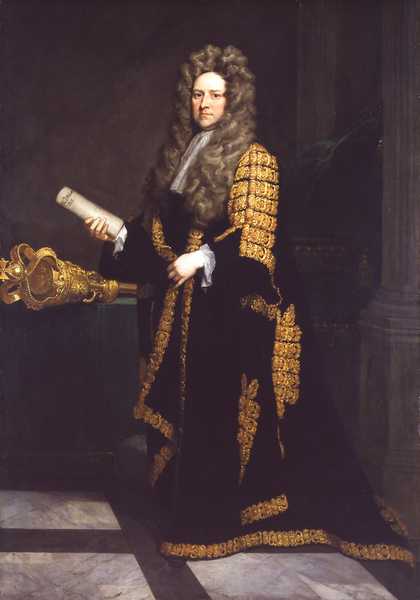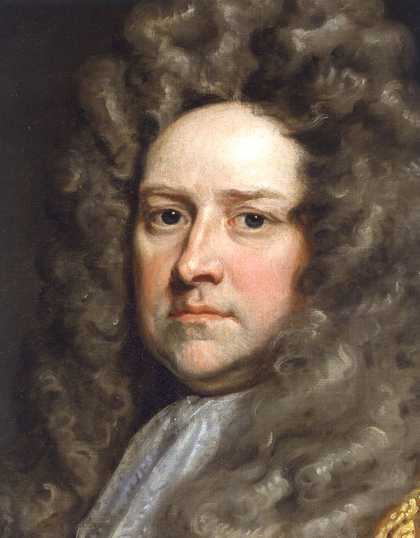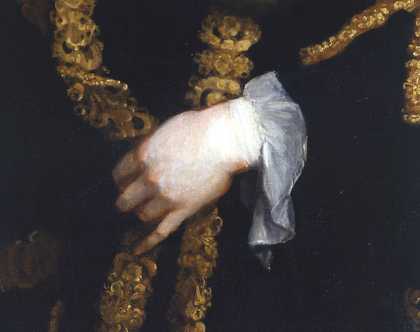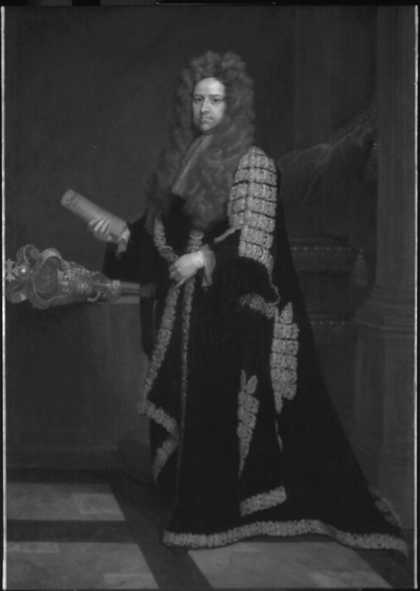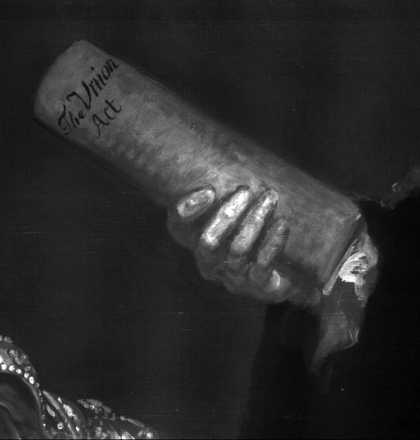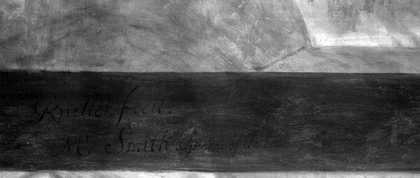This painting is in oil paint on canvas measuring 2205 x 1565 mm (figs.1–3). The single piece of plain woven linen has a thread count of approximately 14 vertical and 11 horizontal picks per square centimetre (fig.4). The canvas contains some discontinuously thick threads in both directions and these may be broken threads that were spliced together by the weaver. Some of these can be seen on the surface of the painting and are particularly evident in raking light. The painting has a glue paste lining and a stretcher that appears to be smaller than the original, which has not survived. The picture size has been reduced from its original format by folding the top and bottom edges around the respective stretcher bars; 152 mm (6 inches) at the top, 90 mm (3 ½ inches) at the bottom. The original measurements of the painting appear to have been 2492 mm (98 1/8 inches) x 1565 mm (61 3/8 inches). Bars marks in the painting indicate that the original stretcher had diagonal braces at all four corners and probably a central, vertical bar. The outer bars of this stretcher measured about 75 mm (3 inches) in width. The lining is in good condition, although at some point since that treatment the painting has been partially strip lined, probably with a glue paste adhesive, and brown paper stuck over the tacking edges.
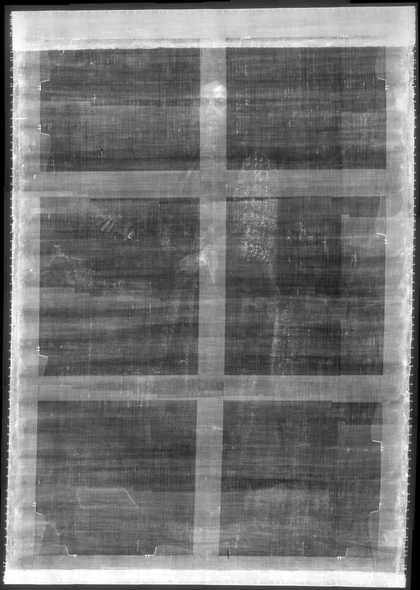
Fig.4
X-radiograph of John Smith, Speaker of the House of Commons c.1707–8
The ground is opaque tan colour. It is covered over with a thin but opaque cool grey priming (figs.5–6).

Fig.5
Cross-section through the black robe at the lower right corner, photographed at x320 magnification. From the bottom: tan coloured ground; grey priming; opaque red underpaint; black paint of robe; thin film of lead white with yellow particles; dark brownish black paint; varnish layers
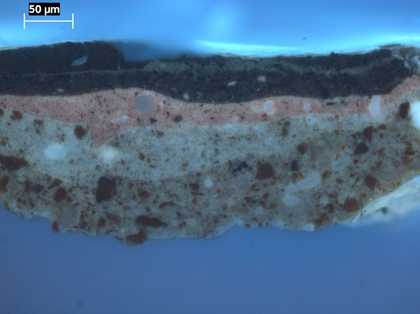
Fig.6
Cross-section through the black robe at the lower right corner, photographed at x320 magnification in ultraviolet light. From the bottom: tan coloured ground; grey priming; opaque red underpaint; black paint of robe; fluorescent, thin film of lead white with yellow particles; dark brownish black paint; varnish layers
No underdrawing is apparent with any form of examination (figs.7–9). Evidence from other paintings by Kneller of about this date suggests that an initial, linear drawing would have been brushed onto the canvas with brown paint, some of which might be left visible in the face to form the delineating shadows.
There is some evidence of sketchy, grey underpainting beneath the green tablecloth and chair in the background. Some areas of the back robe and the floor in the lower right foreground have opaque red paint underneath the visible paint layers (figs.5, 10), although it is not clear whether this should be designated underpainting or pentimento.
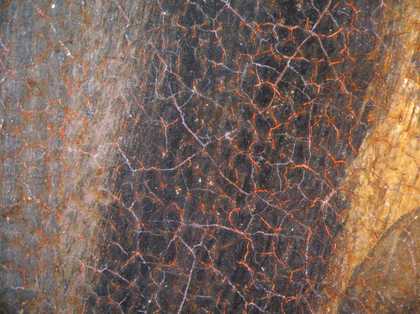
Fig.10
Detail at x8 magnification of red underpainting beneath the black robe
Mainly, however, the image was created with Kneller’s distinctive, vigorous wet-in-wet technique, in which the colour of the ground is often left visible to form half-tone shadows in the flesh tones and the wig (figs.2, 11–12).
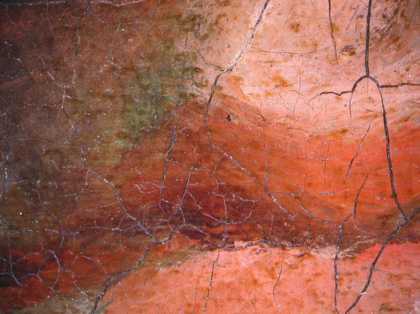
Fig.11
Detail at x8 magnification of the grey ground left visible to form half-shadows around the lips

Fig.12
Detail at x8 magnification of the grey ground left visible to define the edge of the fingertip against the white of the scroll
Pigments include lead white, black (not bone black), earth colours, blue verditer, vermilion, lead tin yellow, chalk, smalt and ground glass.1 The two last are present in many of the colours (fig.13). Microcissing is present in the troughs of the brushwork in the flesh tones and white linen (fig.14).2
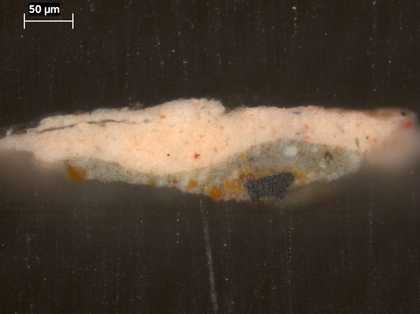
Fig.13
Cross-section through the forehead, photographed at x320 magnification. From the bottom: trace of tan coloured ground; grey priming; flesh paint, containing lead white, vermilion, earth colours and smalt

Fig.14
Detail at x10 magnification of microcissing in the face
March 2005

